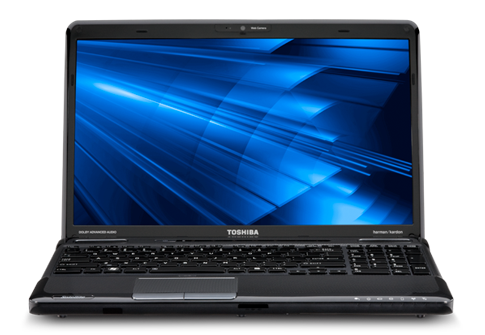Sony VAIO Y Specifications:
Intel Pentium U5400 (1.2GHz, 3MB cache)
4GB DDR3 1066MHz RAM (8GB max)
500GB 5400RPM Toshiba Hard Drive
13.3" Widescreen LED Backlit Display (1366 x 768)
Intel GHA HD Integrated Graphics
Atheros B/G/N, 1Gb LAN, Bluetooth
Ports: 3 x USB 2.0, Headphone Output, Microphone Input, VGA, HDMI, RJ-45 Ethernet, FireWire
6-cell 54Wh battery
Dimensions: 12.8"(W) x 0.93 - 1.2"(H) x 8.9"(D)
Weight: 3.81 pounds (with standard capacity battery)
The VAIO Y is a 13.3" ultraportable CULV-powered notebook from Sony, acting as the affordable-brother to the high-end VAIO Z. This model includes Intel GMA HD integrated graphics, an Intel Pentium CULV processor (New models feature Intel Core i3 and i5 ULV processors), 4GB of DDR3 memory and a WXGA resolution display. In this review we see how well this model stacks up against other ultraportable systems and if it should be added to your back-to-school notebook buying list.
At the time of publishing this review, Sony has phased out the older Intel Pentium processors, as seen in this review, and replaced them with the newer Intel ULV Core i3 and i5 processors
Build and Design
The Sony VAIO Y has a laid back design compared to the more expensive VAIO Z, with slightly thicker panels, smoother lines, and a more tried-and-true color scheme. Whereas the Z might include a custom machined faceplate, the Y offers a standard painted body panel. Another change is the color selection between the two models, with the Z offering more professional finishes and the Y including fun and sporty color options. As a whole the Y-series seems to be the thin and light system designed for a younger crowd. The design still includes many cool elements, including the hinge-integrated power button, slice power indicator light embedded in the top edge of the notebook, and island-style keyboard.
Build quality is top notch for a sub-$800 notebook with sturdy body panels and a very strong chassis. The screen cover provides more than adequate protection for the display, preventing any distortions from showing on the LCD with a firm grip to the opposite side. The keyboard and main body don't seem to have much flex and without the optical drive cavity inside the notebook, it almost seems to have less flex on the right side. Without going to the extremes with a fully machine top-plate Sony still managed to create a very sturdy notebook.
Compared to the Vaio Z which included a proprietary SSDarray, the Sony VAIO Y uses a much more basic, and easier to upgrade 2.5" hard drive. This, as well as the system memory, is accessible through the bottom of the notebook. For users looking to upgrade to anSSD down the road this means you wont have to fully dismantle the notebook just to swap out one component.
Keyboard and Touchpad
The VAIO Y has a comfortable Chiclet-style keyboard that is easy to type on for long periods of time. Compared to the Vaio Zthe spacing is a bit different, putting dedicated Page Up/Down and Home/End keys on the right side of the keyboard, instead of including them as secondary functions over the direction keys. This caused some shrinking of the right shift button and left control button as well as slightly tighter spacing. The keyboard also lacks one of the luxurious backlit keys seen on the VAIO Z, but that was expected given the much lower starting price. Keyboard support is excellent with no noticeable keyboard flex under strong typing pressure. Key responsiveness is great as well as very quiet key actions that don't emit much noise when fully pressed.
The touchpad on the VAIO Y is a Synaptics model that is very responsive and has no discernible lag. The touchpad includes some multitouch features, including two-finger scroll which the Z actually skipped in favor of the chiral-scrolling motion. Refresh rates were excellent, preventing any "trails" from the cursor drawing fast circles on the screen. The touchpad settings out of the box were near perfect, with no tweaks needed during the review. I also found the touchpad buttons to be easy to trigger with the edge of your thumb and had shallow feedback when fully pressed. Overall the touchpad was very good and one of the nicer models seen on a thin and light notebook.
Ports and Features
Port selection on the VAIO Y was very good for a thin and light system, including three USB 2.0 ports, FireWire 400, VGA and HDMI-out, audio jacks, and LAN. Expansion slots included a SDHC and MemoryStick card reader, as well as an ExpressCard/34 slot.
Screen and Speakers
The Sony VAIO Y comes standard with a 13.3-inch WXGA panel with no upgrade options for higher resolutions. Compared to other CULV-based notebooks the screen rates above average with good color and contrast. I have to admit that this screen was a step down from the one seen on the VAIO Z, which had a higher color saturation and deeper black levels (at nearly triple the cost!). For users looking to enjoy a movie on the road, enjoy a YouTube clip during class or type a term paper during a study session the screen is perfect. Backlight levels were good for bright indoor viewing conditions, with the surface measuring 196nit at full brightness. Viewing angles were good, although colors did seem to have a narrow sweet spot of roughly 10-15 degrees before colors started to shift or invert vertically. Horizontal viewing angles were much better, spanning over 60 degrees from the side.
Speaker performance was good for a thin and light system, with strong volume levels to fill a small room. Bass and midrange were lacking, but that was not unusual for a system in this class. Sony does include a headphone jack which puts out clean audio for private listening, as well as an HDMI-out jack for connecting the notebook to a HDTV and stereo.
modified from: notebookreview.com




